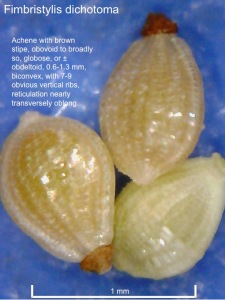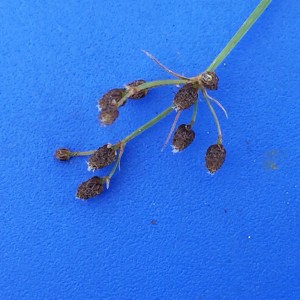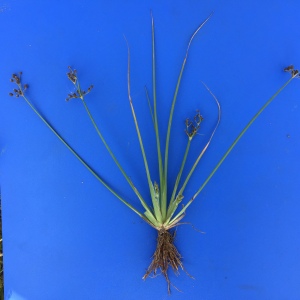Scientific name
Fimbristylis dichotoma (L.) Vahl
Common name
Tall fringe rush, lesser fimbristylis, and two-leaf fimbristylis
Khmer/Indigenous name
–
Family
Cyperaceae
Plant type
Sedge
Description/ Characteristics
Annual or perennial, very variable in habit and size of inflorescence, up to 70—cm—high with short rhizome.
Stem: tufted, slender and angular; reaches a height of 10—75—cm; smooth, slightly hairy or glabrous and compressed below the inflorescence.
Leaf: well developed and about one-half the length of the stem; smooth or more or less hairy; linear to filiform; blades 10—30—cm—long and 0.5—3—mm—wide; ligule a dense fringe of short hairs.
Inflorescence: compound or simple umbel, 3—15—mm—long, composed of loose or dense, few to numerous spikelets; reddish to brownish and ovoid to oblong-ovoid.
Fruit: oblong-ovoid to obovate nut, about 1—mm; 5—10 longitudinal ribs with numerous cross-bars; glossy white to straw-colored, rarely brown.
Habitat – Biology
Common in upland areas; also found in rainfed paddy fields, cultivated fields, lawns, and wetland pastures. Reproduces by seeds; flowers year-round; a single plant can produce up to 6,500 seeds.
Control methods
Cultural control: handweeding or hoeing at seedling stage.
Chemical control: MCPA or 2,4-D at 20 to 30 days after rice emergence.
http://keyserver.lucidcentral.org/key-server/data/08050103-0a0e-4e01-8a03-040d0c020e0a/media/Html/Fimbristylis_dichotoma.htm
More info: http://www.knowledgebank.irri.org/step-by-step-production/growth/weed-management
Image copyright
Dr Robert J. Martin
University of Sydney
bob.martin@sydney.edu.au


